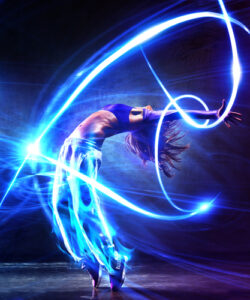 The limbs move through the space around the body, creating lines and shapes that disappear even as the movement is occurring. But what if the joints of the limbs, like little jet engines, left a vapor trail, allowing the movement trajectories to be seen, recorded, and studied?
The limbs move through the space around the body, creating lines and shapes that disappear even as the movement is occurring. But what if the joints of the limbs, like little jet engines, left a vapor trail, allowing the movement trajectories to be seen, recorded, and studied?
This is what Rudolf Laban had in mind when he coined the term “trace-forms”to refer to the imaginary vapor trails inscribed by the moving limbs on the space around the body. His next challenge was to find a way to record these trace-forms so that they could be reconstructed from a notation score, just as the shape of a melody can be reproduced from a musical score.
This was a challenging, because the territory around the body – which Laban called the “kinesphere” – is a trackless void, an empty bubble with no visible landmarks. Laban gave this bubble a geometrical shape, employing various polyhedra such as the cube and octahedron.
By imagining the human figure inside these regular shapes, their edges, corners, and internal rays could be used as landmarks to map the vapor trails of motion.
Find out how in the next blog.
